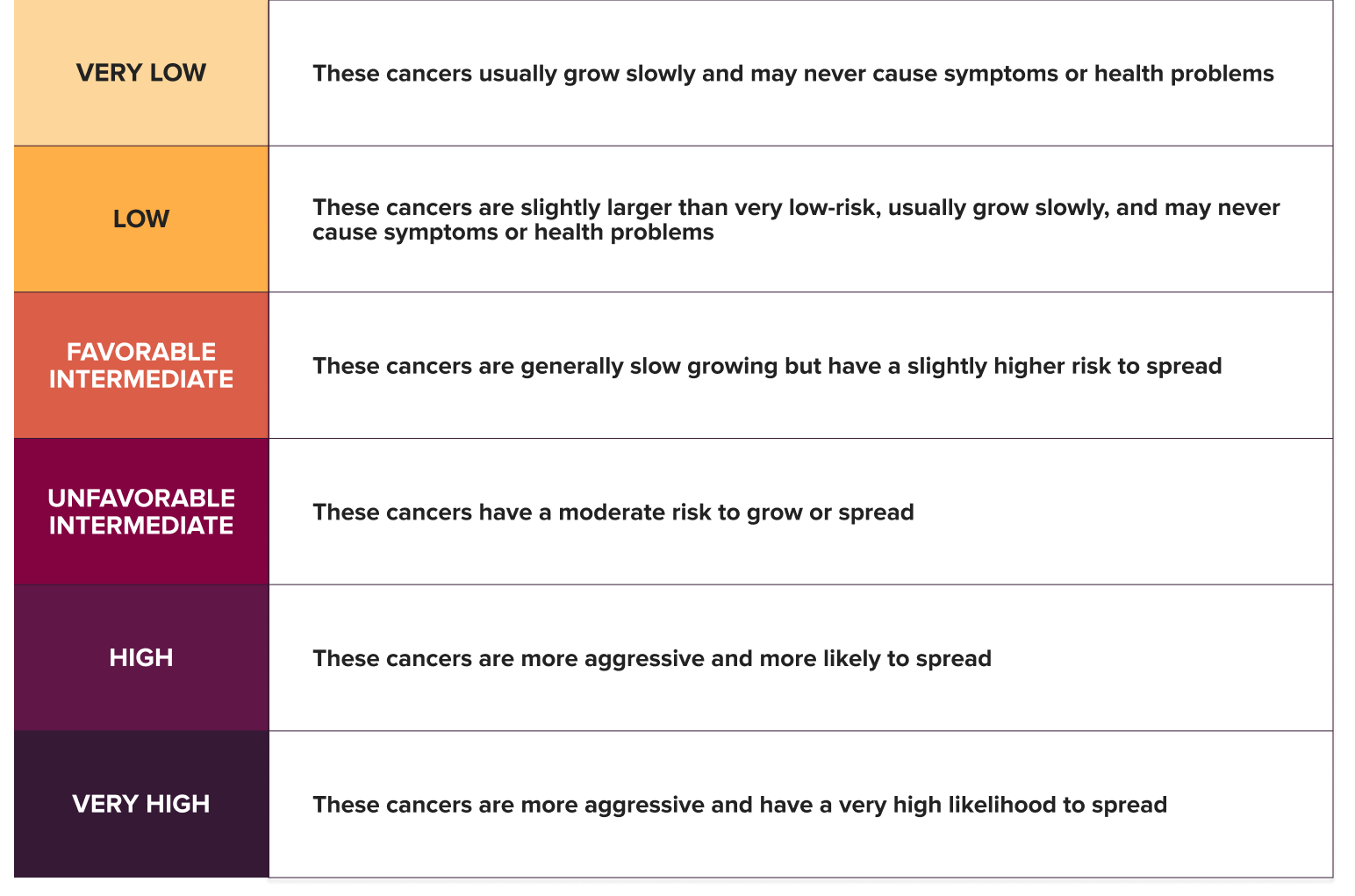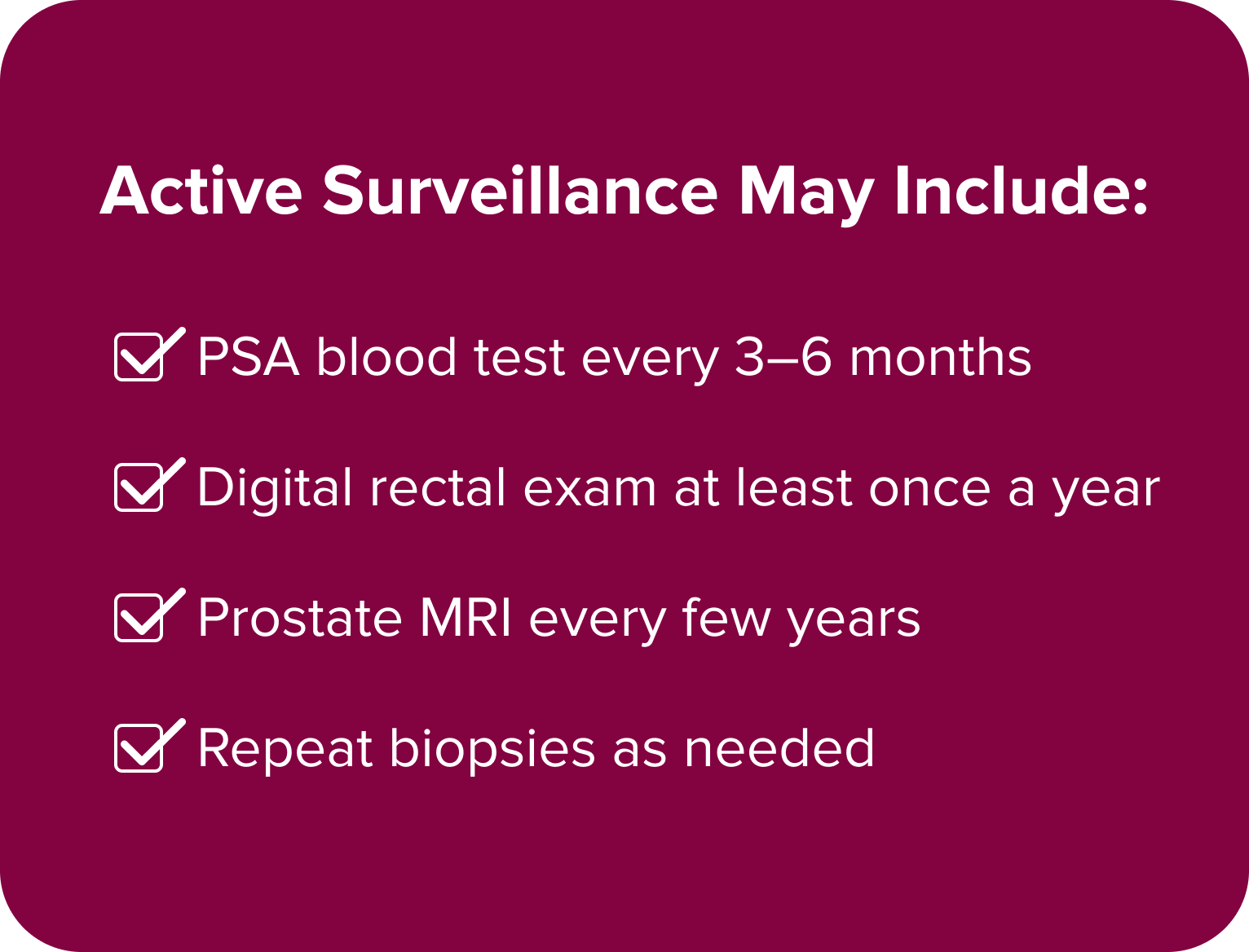
Prostate cancer is one of the most common cancers in men, but most cases do not need immediate treatment. Some grow so slowly they may never cause symptoms or affect long-term health.
Doctors typically rely on risk categories—based on things like PSA levels—to decide whether to treat or monitor the cancer. But these tools don’t provide the full picture of the disease.
Genomic testing offers additional information by analyzing the expression of genes within the cancer. This helps clarify the treatment path, such as whether active surveillance (regular monitoring without treatment) is a safe option or if therapy makes more sense.
In this article, we’ll look at how traditional risk factors are used—and how genomic testing can add another layer of insight.
Understanding Localized Prostate Cancer Risk Categories
When prostate cancer is found early and hasn’t spread beyond the prostate (called localized prostate cancer), one of the first decisions is whether it needs treatment right away or if it can be safely monitored.
Doctors take into account certain factors, such as age, health status, and patient preference, as well as three main clinical factors:
- PSA Level – A protein made by the prostate. Higher levels in the blood may be a sign of more advanced cancer, especially if they’re rising quickly.
- Clinical Stage (T-Stage) – Based on the physical exam and imaging, this tells how far the cancer has spread inside or outside the prostate.
- Gleason Score – A grading scale that reflects how aggressive the cancer is, based on the two most common patterns of abnormal cancer cells seen under a microscope. Gleason scores of 7 or higher are considered for treatment.
A Gleason score of 3+4=7 means that most of the cell pattern is a 3, and the second most common cell pattern is a 4. The first number reflects the dominant pattern. A score of 4+3=7, though the same total, indicates a more aggressive cancer because pattern 4 is more dominant.
According to these three factors, doctors will place your cancer into one of the six main risk categories:1

Each category helps guide treatment decisions.2
Limitations of Traditional Risk Categories
While these risk categories are useful for guiding treatment decisions, they don’t always capture how your specific cancer will behave.
As a result, some people are overdiagnosed—identified with slow-growing tumors that may never cause harm—and overtreated with therapies that carry risks like urinary incontinence, erectile dysfunction, and bowel issues.3-6
A 2022 study analyzing prostate cancer diagnoses from 2016 estimated that nearly 50% of cases fell into this category of overdiagnosis or overtreatment.7
At the same time, some prostate cancers may be underdiagnosed—meaning they appear less risky based on traditional categories but actually have the potential to grow or spread. Research shows that relying only on standard clinical factors can sometimes miss more aggressive cancers, leading to delays in treatment.4
Beyond Risk Categorization: Tumor-Based Genomic Testing
To address these limitations, genomic testing has been developed to offer more information about how aggressive your prostate cancer is. These tests analyze gene expression in your cancer cells—using tissue from a biopsy or surgery—to provide more accurate predictions about how fast the cancer may grow or spread.
Common Genomic Tests for Localized Prostate Cancer
Several genomic tests have become widely adopted: Decipher® Prostate, Genomic Prostate Score® (GPS), and Prolaris®.8-10
Each test gives a score that, combined with clinical factors like PSA levels, Gleason score, and clinical stage, helps create a clearer picture of your risk and guides more personalized treatment decisions, like deciding if active surveillance is a safe choice or if treatment should be undergone.
What is Active Surveillance?
Active surveillance is a way to manage localized prostate cancer without treating it right away. It’s often used for patients with very low- to low-risk cancer and, at times, favorable intermediate-risk cancer that’s not likely to grow or spread quickly.
Since many prostate cancers stay the same for years, active surveillance allows you to avoid—or at least delay—treatments like surgery or radiation, along with the side effects they can cause. This approach helps protect your quality of life while still keeping the cancer under careful watch.

The exact monitoring plan may vary based on your age, overall health, and how stable the cancer appears.
If any signs of progression show up, you and your doctor can revisit your options and decide whether it’s time to start treatment.
However, some patients still wonder if it is really ok to delay treatment.
How Genomic Testing Supports Active Surveillance
If you have very low- to favorable intermediate-risk cancer, genomic testing can support choosing active surveillance. If the test confirms your cancer is unlikely to spread, you may safely delay treatment—avoiding side effects while reducing anxiety about waiting.
In fact, a large study found that genomic testing using either Decipher, GPS, or Prolaris led more patients with favorable intermediate-risk prostate cancer to choose active surveillance. For every nine people tested, one more was able to safely delay or avoid treatment without compromising outcomes.11
In another study, researchers looked at how the Prolaris test influenced decisions in patients with low-risk prostate cancer. Among those who met both clinical and genomic criteria, over 80% chose active surveillance. After about two years, fewer than 2% showed signs of progression, and most remained on surveillance without needing treatment.12
Genomic testing can also increase confidence when choosing active surveillance. In a separate study involving patients with very low- to favorable intermediate-risk cancer, doctors reported that the GPS test improved their confidence in 90% of cases—and patients felt the same. After testing, patients reported less uncertainty about their decision.13
When Treatment May Be the Better Option
In some cases, genomic testing reveals aggressive cancer traits that traditional clinical factors may miss. When this happens, your doctor may recommend starting treatment earlier to prevent the cancer from progressing.
This is especially valuable in borderline cases—when PSA levels, biopsy results, and other findings don’t provide a clear answer. In these situations, genomic results offer added clarity and help support more confident decision-making.
Even if you’re in a high- or very high-risk group, where treatment is typically recommended, genomic testing can help tailor your treatment plan. For example, it can show whether additional therapies, such as radiation after surgery, are likely to improve your outcomes.
One key study found that patients with high-risk genomic scores from Decipher benefited significantly from radiation therapy after surgery (removal of prostate), while those with lower-risk scores experienced little to no added benefit—helping avoid unnecessary treatments.14
Conclusion
Deciding how to manage localized prostate cancer isn’t always straightforward—especially if you have a very low- to favorable intermediate-risk disease. Genomic testing adds valuable biological insight beyond traditional tools, helping you and your doctor make more confident, personalized decisions.
If treatment is necessary, the next step is deciding which option is right for you. In our next post, we’ll explore the benefits and risks of the two main treatment approaches—surgery and radiation—and what to consider when making that choice.
FAQs
-
What is localized prostate cancer?
Prostate cancer occurs when cells in the prostate gland begin to grow abnormally. When the cancer is found only in the prostate and hasn’t spread elsewhere, it’s called localized prostate cancer. This is different from advanced prostate cancer, which has spread beyond the prostate to other parts of the body.
-
What is active surveillance?
Active surveillance is a monitoring strategy used for some prostate cancers, such as localized prostate cancer, where the cancer is low-risk and not likely to spread. Instead of treating it right away, doctors closely monitor the cancer with regular tests to track any changes over time. For localized prostate cancer, such testing includes PSA levels, digital rectal exams, prostate MRIs, and repeat biopsies if needed.
-
How is genomic testing used in localized prostate cancer?
Genomic testing analyzes the expression of specific genes in prostate cancer cells to provide a clearer prediction of how the cancer may behave. It is typically performed alongside standard assessments, such as PSA levels, Gleason scores, and imaging. For patients with localized prostate cancer, genomic testing helps estimate the likelihood of the cancer growing or spreading and guides more personalized decisions about whether to closely monitor it (active surveillance) or begin treatment.
-
Who is a good candidate for active surveillance?
A good candidate for active surveillance is typically a patient diagnosed with very low-, low-, or favorable intermediate-risk, slow-growing localized prostate cancer. This means the cancer is confined to the prostate, has low PSA levels, has a low Gleason score, and shows no signs of spreading on imaging tests. The risk assessment can be further improved with genomic tests such as Decipher, Prolaris, and Genomic Prostate Score (GPS).
References
- https://www.cancer.org/cancer/types/prostate-cancer/detection-diagnosis-staging/risk-groups.html
- https://www.cancer.org/cancer/types/prostate-cancer/treating/by-stage.html
- https://evidence.nejm.org/doi/10.1056/EVIDoa2300018
- https://www.nejm.org/doi/10.1056/NEJMoa2214122
- https://www.uspreventiveservicestaskforce.org/uspstf/document/contextual-review-overdiagnosis-in-prostate-cancer-screening/prostate-cancer-screening
- https://evidence.nejm.org/doi/full/10.1056/EVIDoa2200031
- https://pmc.ncbi.nlm.nih.gov/articles/PMC12191725/
- https://decipherbio.com/decipher-prostate/patients/decipher-prostate-overview/
- https://mdxhealth.com/gps-physician/
- https://myriad.com/genetic-tests/prolaris-prostate-tumor-test/
- https://ascopubs.org/doi/full/10.1200/PO.18.00163
- https://www.tandfonline.com/doi/full/10.2217/pme-2019-0084
- https://www.goldjournal.net/article/S0090-4295(19)30001-9/fulltext
- https://www.nature.com/articles/s41391-019-0185-7
Trademark Acknowledgement
Decipher®, Genomic Prostate Score® (GPS), and Prolaris® are registered trademarks of their respective companies. They are mentioned here for informational purposes only.




Leave a Reply